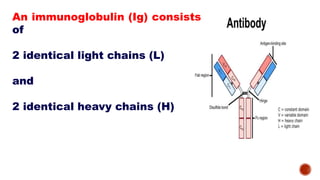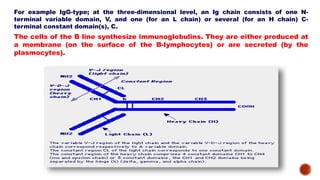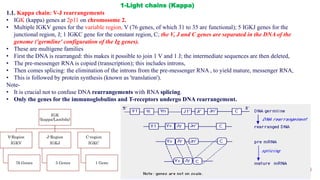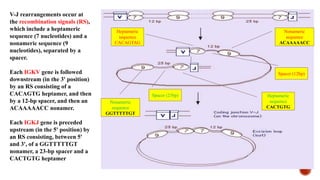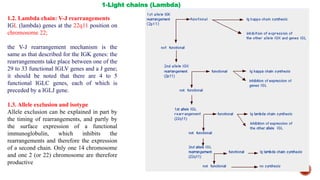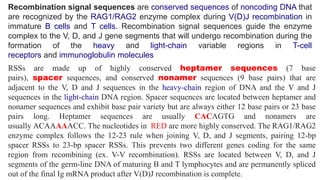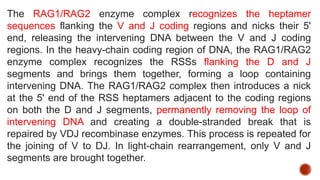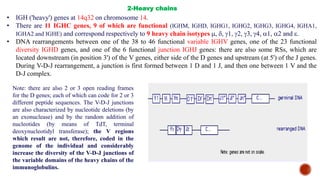The document discusses the structure and synthesis of immunoglobulins (Ig), detailing the roles of light and heavy chains and the genetic mechanisms involved in their diversity, such as V(D)J recombination and somatic hypermutation. It describes the genetic organization of immunoglobulin genes, including kappa and lambda light chains and various heavy chain isotypes, and emphasizes the importance of DNA rearrangements and splicing in creating functional antibodies. Overall, the text outlines the complexity of immunoglobulin synthesis and the resulting capacity to produce a wide array of antibodies in response to various antigens.

